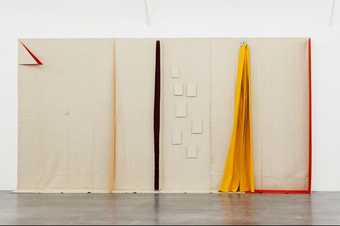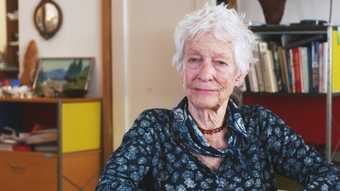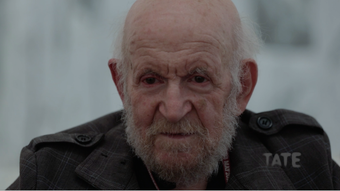[Franz Erhard Walther]: I didn't define myself as an artist, my surroundings did. By the age of 16, I developed the idea to study art. They had a learning programme which was based on the Bauhaus.
Boring, just informed by boring paintings, rules.I started to experiment and I did interesting material experiments, and I was exiled. They threw me out of art academy. ItŌĆÖs no joke.ŌĆÖHeŌĆÖs very self-consciousŌĆÖ. That was true, I thought ŌĆ” So I tried to work on myself.
Then I applied at D├╝sseldorf and I was taken on. At the same time, Gerhard Richter and Sigmar Polke applied. So we were a funny crew, you know? And this teacher, he was so generous. Karl Otto G├Čtz said: ŌĆś I don;t understand what you are going, but you are a serious young man, go onŌĆÖ. That was encouragement I never forgot.
And there I developed this processual work material and some day I discovered of course these pieces could be turned like the pages of a book. And one day I said, well who is that turning or that handling of those elements? Could that be part of the work? And then I made this as the the main theme.
Doing, acting, putting objects in relation to the body. Asking the question, when itŌĆÖs on the table you can address it as a kind of strange sculptural thing but when, for instance, you have it in your hand somehow you make your hand into a pedestal. Then the ŌĆśactivationŌĆÖ, you alter the meaning. Where's the work? This is the question There's no real answer. That opened the horizon.
I thought then IŌĆÖll go to New York, confront my work with the art world because, at that time, New York was the centre. In 1967, I met Kapser K├Čnig while he visited me in New York. He saw my work, was completely amazed. We sat together for about an hour, a little more, and he said: ŌĆśYou have to make a bookŌĆÖ.
Before, nobody took notice of it, and that guy came and said we make a book. It was very important. Kasper placed it in all the national galleries and from that moment on, everybody knew it about it.
They didn't know what to do with it, but nevertheless ŌĆśWhat is this strange book and this activation, what does that mean?ŌĆÖ.
I had a lady, a visitor. She was a real British lady. She was a curator at the MoMA in New York.
And she came to my place and I activated some of the pieces for her and she seemed to be really puzzled. So then, one year later, mounted this famous show Spaces at the MoMA in New York inviting 5, more or less unknown, some really unknown, and some others almost
unknown artists like his strange guy from Europe. And then at that moment, collectors in Germany started to buy works.
Before I had to earn money as a cake decorator in New York. Which is also artistic but from that moment on, I got the engagement of these curators. I could live off my work, which I hadn't expected yet. It was like winning at Lotto, it was unbelievable for me.
But one thing I should mention, why is there today an impact? These works are several decades old. Young people came activating [the works]. They were wondering about when the pieces were done. They thought they were pieces of today.
When they learned that they were done in the Sixties, a guy said to me: ŌĆśHug, it jumps out of the timeŌĆÖ. It was fantastic to hear this, you know?
Using a combination of fabrics and objects in his work, the German artist Franz Erhard Walther invites the audience to become an active participant. As he shares his path to becoming an artist, he encourages us to question the traditional idea of the artist as a creator and the audience as a spectator.



